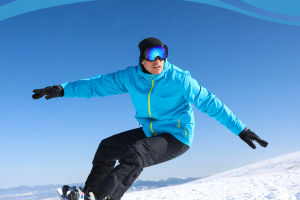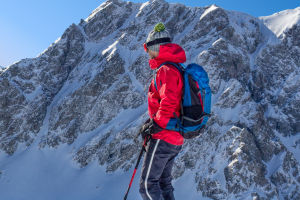Spring is a season suitable for mountaineering, but the sudden challenge of climbing a mountain may be dangerous due to a lack of experience in mountain exercise. Hence, thorough preparation is essential to fully relish the enjoyment of climbing while ensuring safety remains paramount.
Muscle Strength: Training helps to strengthen the core muscles, allowing you to maintain balance on uneven or steep slopes. Additionally, leg muscles benefit greatly from exercises like squats and lunges, which enhance stability for climbers.
Cardio: Cardiopulmonary training is also a must-have preparation before climbing. Mountains above 3,000 meters above sea level have thin air and low temperatures. Therefore, it is necessary to enhance lung capacity and adapt to the environment to avoid altitude sickness.
Weight-Bearing: When tackling a multi-day ascent of a long-distance mountain, rigorous weight training becomes imperative. Prepare yourself to carry loads equivalent to 75% of the anticipated weight you'll bear on the mountain, ensuring your physical readiness for the challenge.
Mental Conditioning: Irrespective of your physical prowess, mental preparedness is paramount for mountain climbing. Engage in mental exercises such as studying mountaineering accounts of fellow climbers or delving into mountaineering literature and documentaries. These activities aid in fortifying your mental resilience, equipping you to effectively navigate the various challenges encountered during mountain expeditions.
Things You Must Know Before Climbing:
Climbing accidents are primarily attributed to insufficient preparation rather than age-related factors. Mountaineering stands out as an ideal form of exercise suitable for individuals of all ages.
The calorie expenditure during mountain walks surpasses that of marathons and extended periods of flat jogging. Engaging in long-term mountaineering endeavors can lead to notable reductions in cholesterol levels, arteriosclerosis indices, neutral fat, and blood pressure.
Moreover, besides enhancing physical well-being, the mental gratification experienced upon reaching a summit can yield profound positive effects on both physical and mental health.
Item Preparation:
Choose hiking shoes that are tailored to your foot type and the terrain you'll be traversing. Wear them during training sessions, as most hiking shoes require a break-in period to conform to your feet. While high-top hiking shoes offer ankle protection, ensure the circumference of the ankle area is appropriate to prevent discomfort.
Equally vital is selecting high-quality hiking socks. Often overlooked, hiking socks play a critical role in your hiking comfort. Testing your hiking boots and socks together during training ensures a comfortable fit and enhances your overall hiking experience.
Use trekking poles. The correct use of trekking poles will make your mountaineering experience different. It can help reduce the wear and impact of weight on your knees and make it easier to climb steep slopes.
Thorough preparation is paramount before undertaking a mountain climbing expedition to minimize the risk of accidents and maximize the enjoyment of the experience. This encompasses both physical and mental readiness, as well as making informed choices regarding equipment selection.
By diligently following these guidelines, you can embark on a mountain climbing adventure with confidence, savoring the awe-inspiring beauty and exhilaration of mountaineering while prioritizing safety and preparedness.


